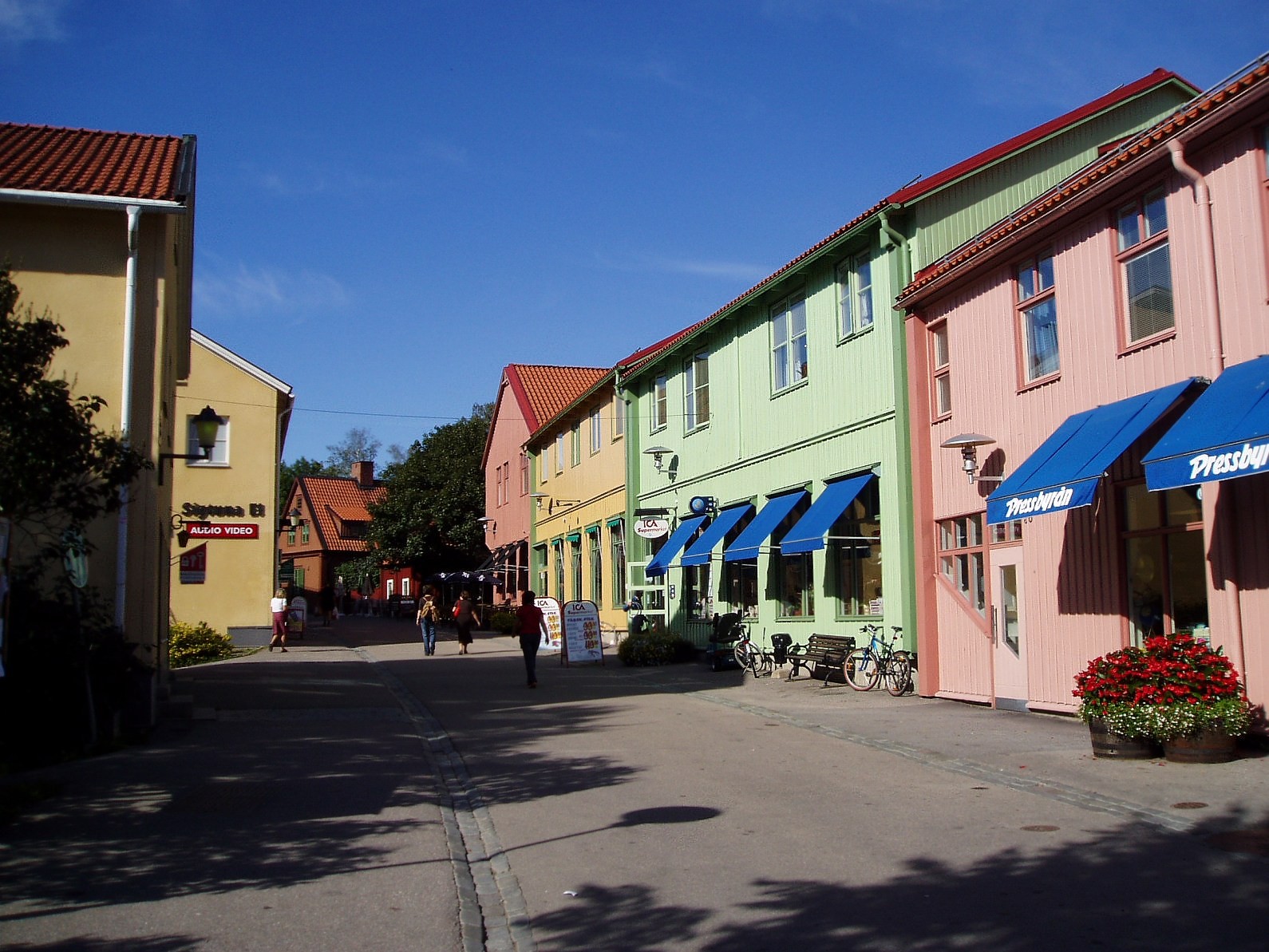- Sigtuna
Infobox Settlement
official_name = Sigtuna
image_caption = Storgatan in Sigtuna
image_shield =
mapsize =
map_caption =
pushpin_
subdivision_type = Country
subdivision_name =Sweden
subdivision_type1 = Municipality
subdivision_name1 =Sigtuna Municipality
subdivision_type2 = County
subdivision_name2 =Stockholm County
subdivision_type3 = Province
subdivision_name3 =Uppland
area_footnotes = cite web |title=Tätorternas landareal, folkmängd och invånare per km2 2000 och 2005 |publisher=Statistics Sweden |url=http://www.scb.se/statistik/MI/MI0810/2005A01B/T%E4torternami0810tab1.xls |format=xls |language=Swedish |accessdate=2008-05-15]
area_total_km2 = 3.95
population_as_of = 2005-12-31
population_footnotes =
population_total = 7,204
population_density_km2 = 1824
timezone = CET
utc_offset = +1
timezone_DST = CEST
utc_offset_DST = +2
latd=59 |latm=37 |lats= |latNS=N
longd=17 |longm=43 |longs= |longEW=E
website =Sigtuna is a city in the
Uppland part ofStockholm County , centralSweden . It has a population of 7,000 and is the namesake ofSigtuna Municipality , even though the seat is inMärsta with 23,000 inhabitants.Sigtuna is, despite its small population, for historical reasons often still referred to as a "city".
Statistics Sweden , however, only counts localities with more than 10,000 inhabitants as cities.Although less significant today, Sigtuna has an important place in Sweden's early history. The history of Sigtuna before the
11th century , as described in theNorse saga s and other early medieval sources, can be found in the articleOld Sigtuna .Geography
Sigtuna is situated at the bay Skarven, stretching around
Upplands-Bro and a part of Lake Mälaren.History
Sigtuna was founded on what was then the shore of Lake Mälaren just over 1,000 years ago. It took its name from an ancient royal estate (see
Uppsala öd ) several kilometers to the west (seeFornsigtuna ). Various sources claim KingEric the Victorious as founder while others claim King Olof Skötkonung.It operated as a royal and commercial centre for some 250 years, and was one of the most important cities of Sweden. During a brief period at the end of the 10th and beginning of the
11th century , Sweden's first coins were minted here. The old church built in the 13th century by theDominican order at the monastery still remains, and has had few restorations. The Dominican monastery played an important role in the Swedish Middle Ages and produced many important Church officials. Among them, many Swedish archbishops. Many church and monastery ruins still stand, and the old city structure has not been remodelled, as happened in many Swedish cities during the 1800s and 1900s.In
1187 Sigtuna was attacked by Baltic-Finnish raiders fromCouronia andEstonia . Among the casualties of this raid was the Swedish archbishop Johannes. It remained occupied for some time. This contributed to the diminishing of its commercial importance in the 13th century, in favor ofUppsala ,Visby ,Kalmar andStockholm . [ [http://heninen.net/sigtuna/english.htm Raid on Sigtuna] (1187)]The current
coat of arms can be traced to the city's first known seal, dating from 1311. According to a legend (possibly inspired by the city arms) Sigtuna was once the Royal seat, but this can not be confirmed. The crown may also symbolize the large royal mint which was located in the city. The coat of arms is since1971 valid for the much largerSigtuna Municipality .In the late 19th century, it still only hosted about 600 people, and was the smallest city in Sweden. The city remained insignificant until the second half of the 20th century. Much of the population growth can be related to
Arlanda Airport , situated some 10 km from Sigtuna.Twin Cities
Rakvere ,Estonia See also
*
Sigtunaskolan Humanistiska Läroverket , a famous boarding school.
*The replica of the Swedish city of Sigtuna , [http://www.panoramio.com/photo/32888 panoramio photo's of the replica]References
* [http://runeberg.org/nfce/0245.html article "Sigtuna"] from
Nordisk familjebok External links
* [http://www.sigtuna.se Sigtuna Municipality] - Official site
Wikimedia Foundation. 2010.

